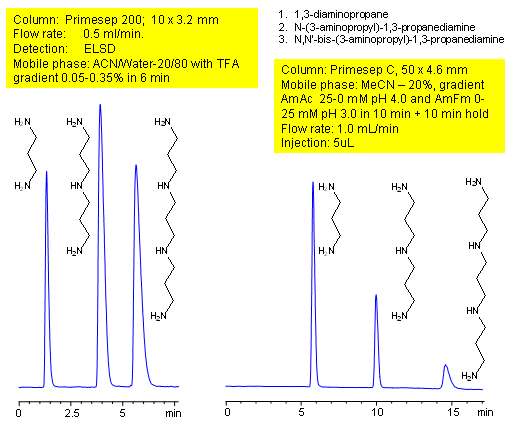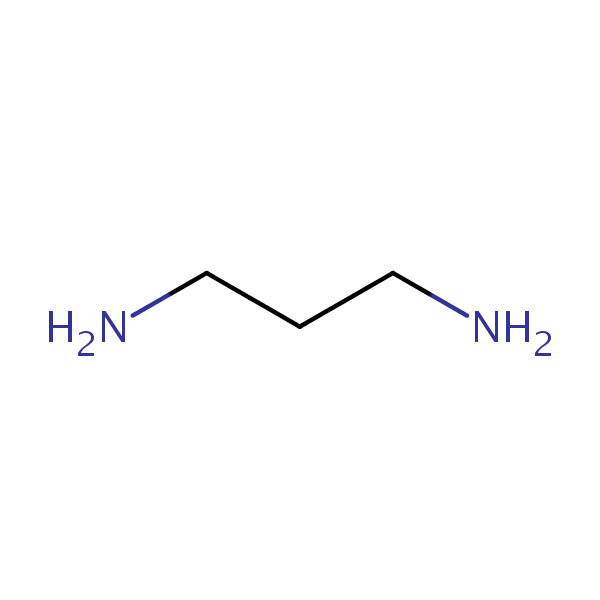| CAS Number | 109-76-2 |
|---|---|
| Molecular Formula | C3H10N2 |
| Molecular Weight | 74.127 |
| InChI Key | XFNJVJPLKCPIBV-UHFFFAOYSA-N |
| LogP | -1.43 |
| Synonyms |
|
Applications:
HPLC Separation of Polyamines
April 13, 2004

Primesep 200 separates the very hydrophilic polyamines, 1,3-diaminopropane, N-(3-aminopropyl)-1,3-diaminepropane, N,N-bis-(3-aminopropyl)-1,3-diaminepropane. The retention and resolution are affected by either a TFA concentration gradient, or a pH gradient from pH 4 to 3. This flexibility is obtained by simple mobile phases of water, acetonitrile (MeCN, ACN), ammonium formate, ammonium acetate or trifluoracetic acid (TFA) with evaporative light scattering detection (ELSD).
Application Column
Primesep 200
The Primesep family of mixed-mode columns offers a wide variety of stationary phases, boasting unprecedented selectivity in the separation of a broad array of chemical compounds across multiple applications. Corresponding Primesep guard columns, available with all stationary phases, do not require holders. SIELC provides a method development service available to all customers. Inquire about our specially-tailored custom LC-phases for specific separations.
Select optionsN,N’-Bis(3-aminopropyl)-1,3-propanediamine
N-(3-Aminopropyl)-1,3-propanediamine (Norspermidine)
Polyamines
Propylendiamine



